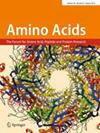Amino acid stable carbon isotopes in nail keratin illuminate breastfeeding and weaning practices of mother – infant dyads
Abstract
Compound-specific stable carbon isotope analysis of amino acids (CSIA-AA) is widely used in ecological studies to analyze food-webs and is gaining use in archaeology for investigating past diets. However, its use in reconstructing breastfeeding and weaning practices is not fully understood. This study evaluates the efficacy of stable carbon isotope analysis of amino acids in early life diet reconstruction by analyzing keratin from fingernail samples of three mother-infant pairs during late gestation and early postpartum periods. Our results show that stable carbon isotope ratios (δ13C) of glycine, and to a lesser extent glutamate, effectively trace the onset of exclusive breastfeeding and the end of weaning in infants. We propose that glycine’s ‘conditionally essential’ metabolic pathway during infancy allows it to reflect maternal glycine δ13C, indicating breastmilk consumption. Subtle changes in glutamate δ13C likely result from its ‘non-essential’ status. Additionally, δ13C values of glycine and glutamate indicate maternal physiological and pathological stress due to catabolic effects such as gluconeogenesis. These findings have significant implications for ecological and archaeological research using CSIA-AA for dietary reconstructions. They highlight the need to understand how metabolic pathways affecting δ13C of amino acids may change over an individual’s lifespan or be altered due to various forms of stress.



 求助内容:
求助内容: 应助结果提醒方式:
应助结果提醒方式:


